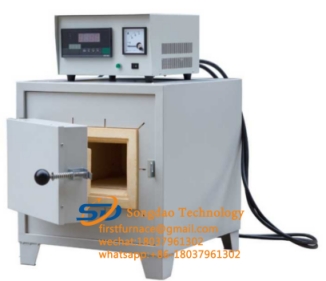- 11
- Apr
Ke lintlha life tse amang lebelo la ho futhumatsa la libopi tsa motlakase tsa mofuta o phahameng oa lebokose?
What are the factors that affect the heating speed of high-temperature box-type electric furnaces?
1. Matla a mocheso o phahameng oa lebokose-mofuta oa sebōpi sa motlakase
Ha workpiece e phekoloa mocheso le ho futhumala, thepa ea ho futhumatsa e khethiloeng e fapane, ‘me lebelo la ho futhumatsa le fapane, empa bakeng sa sebōpi sa motlakase sa mofuta o phahameng oa lebokose, lebelo la ho futhumatsa le batla le lekana, le ntho e khethollang ho futhumatsa. lebelo ke matla le matla a sebōpi sa motlakase Ha boleng bo boholo, mocheso o eketsehileng o ka fanoa ka nako ea yuniti, ‘me ka potlako lebelo la ho futhumatsa le tla ba ka tlhaho. Ka hona, haeba u sebelisa sebōpi sa mofuta oa lebokose la sebōpi bakeng sa phekolo ea mocheso le ho futhumatsa, haeba u batla lebelo le potlakileng la ho futhumatsa, u lokela ho khetha sebōpi sa motlakase se nang le matla a phahameng a mocheso o phahameng.
2. Khetho ea mokhoa oa ho futhumatsa
Ha u sebelisa sebōpi sa motlakase se nang le mocheso o phahameng oa lebokose ho futhumatsa mosebetsi, mokhoa oa ho futhumatsa oa workpiece o lokela ho nkoa hape. Har’a bona, lebelo la ho futhumatsa la workpiece le fapane bakeng sa ho futhumatsa ka sebōpi, ho futhumatsa ho futhumatsa, ho futhumatsa ka sebōping le ho futhumatsa mocheso o phahameng. ea.
3. In terms of heating the workpiece
Nakong ea ho futhumatsa mosebetsi oa matsoho ka sebōpi sa motlakase sa mofuta o phahameng oa lebokose, haeba lebelo la ho futhumatsa le sa laoloe hantle, phapang ea mocheso pakeng tsa ka hare le ka ntle ea workpiece e tla ba e kholo haholo, ‘me khatello e kholo ea mocheso e tla ba teng. e hlahisoe ka hare ho workpiece, e leng ho tla etsa hore workpiece e holofale kapa e be e petsoha. Bakeng sa li-workpieces tse teteaneng le tse kholo, ha e felle feela ka matla a ho futhumatsa a sebōpi, empa hape e lekanyelitsoe ke lebelo la ho futhumatsa le lumelloang ke workpiece ka boeona. Moeli ona o ka akaretsoa e le moeli oa phapang ea mocheso karolong e qalang ea ho futhumatsa, le tekanyo ea ho chesa qetellong ea mocheso. Moeli oa ho futhumatsa le ho fokotsa likhaello tsa mocheso o bakoang ke mocheso o feteletseng oa sebōpi.
4. Moeli oa phapang ea mocheso sethaleng sa pele sa ho futhumatsa ha workpiece
In the initial stage of heating, the essence of limiting the heating rate is to reduce thermal stress. The faster the heating rate, the greater the temperature difference between the surface and the center, and the greater the thermal stress, which may cause deformation and cracking of the workpiece. For metals with good plasticity, thermal stress can only cause plastic deformation, which is not harmful. Therefore, when the temperature of low carbon steel is above 500 ~ 600℃, the influence of thermal stress can be ignored. The allowable heating speed is also related to the physical properties (especially thermal conductivity), geometry and size of the metal workpiece. Therefore, you must be especially careful when heating large-sized high-carbon steel and alloy steel workpieces, while thin materials can be arbitrary Speed heating.
5. Limitation of the degree of burn-through at the end of heating of the workpiece
At the end of heating, there may still be a temperature difference in the section of the steel. The greater the heating rate, the greater the temperature difference between the inside and the outside, which tends to limit the heating rate at the end of heating of the steel. However, both practice and theory show that it is not advisable to reduce the heating rate of the entire heating process. Therefore, often after rapid heating, in order to reduce the temperature difference, the heating speed or heat preservation can be reduced to obtain a uniform temperature inside and outside.

